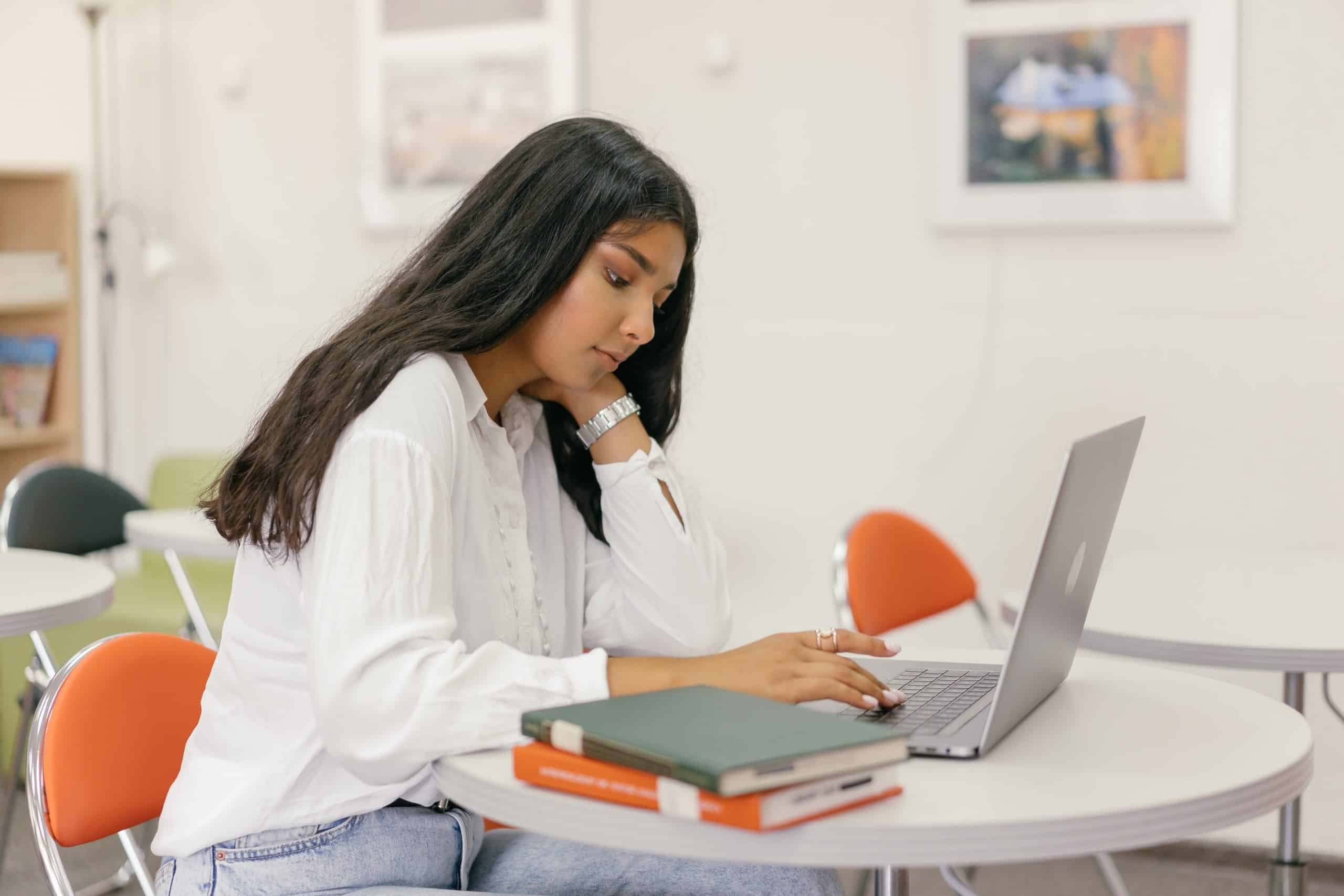By Anna Avetisian
The National Center for Education Statistics states, “The number of undergraduate students enrolled in at least one distance education course was 97% higher in 2020 than prior to the pandemic in fall 2019.” The impacts that online courses in the college environment have had and continue to have on students and teachers are, to some degree, undetermined. It is well known the outstanding impact the pandemic has had on various communities. The pandemic has affected our world and continues to do so in many ways. In this critical time of technology being embedded into education, it is important that we closely follow these negative and positive impacts of online learning and assess if changes should or should not be made.
Technology’s biggest blunders
Online courses have added extra screen time to a generation that already is said to have an abundance of time spent staring at screens. This generation is often called anti-social due to the time consumption of technology. Technology’s rooted establishment within educational learning is not something commonly spoken about. With this anti-social label cast over this generation, the estimation of online classes’ effect on social skills has yet to be made.
Jill Napier, a high school teacher, and former college graduate said “If I were an undergrad in this day and age and taking advantage of only online classes, I do believe that my interpersonal skills in face-to-face settings might be negatively impacted.”
Napier said she might be skilled in other ways related to online settings. During the pandemic, her school district worked completely online. Classes were conducted via zoom and work was assigned via Google Classroom. She said the utilization of online resources has changed her teaching career in many ways even after the return to in-person learning. “Finally, all students in our district have internet connections and computers which helps to make learning more equitable,” Napier said.
During the time of the pandemic, Napier completed her Master’s in Education in which all 36 hours of learning were conducted in an online format. However, during her undergraduate college experience, online classes were not considered a possibility. She said in-person classes forced her to be accountable and were the reason for her attentiveness and academic success. “I find that some things about online courses are advantageous like giving working individuals an opportunity to take classes that don’t interfere with their personal schedule, but I also think that online instruction can sometimes fall short of an in-person learning experience,” Napier said.
Technology’s biggest upsides
On the other hand, Halle Baisas, a college student who takes all online classes, said that in-person classes feel time-consuming, and her attentiveness is disrupted sitting in a classroom. She said that her social skills are not noticeably different and made the point that screen time is not much different, either due to professors moving away from offline assignments even for in-person classes. Although her performance is better in online classes, she does acknowledge that interactions with peers are missed.
“That’s the one thing missing from online classes; it is more difficult to build relationships with your peers.” Baisas sees online classes and in-person classes as equally difficult.
Professor Dorothy Reed has taught in the art and design department at U of L since 2003. During this time, she has taught roughly 17 in-person courses and roughly 40 online courses as well as around 20 in-person classes taught at other colleges. Reed made it clear right away that there are pros and cons to both in-person and online classes. “It is nice to interact with students, and I feel there can be a more personal touch. It is also easier to interact with students that might need assistance, which is, I think, somewhat less stressful than getting an official email.” She said that both her online and in-person students perform similarly and are equally involved for the most part.
As a professor, she brings up views that students may not see. For example, students who struggle with educational disabilities are more likely to become confused in online courses, therefore Reed said they usually greatly benefit from in-person help. Reed said she has noticed students of certain majors sometimes differ in putting more energy and effort into her online courses.
Both being teachers, Napier relates to Reed’s perspective of bringing up viewpoints that students may miss. Their contrast between high school to college teaching brings analogous views to the topic. “I think online courses are beneficial, but I think more extensive training should be provided for collegiate lectures to make the experience as worthwhile as in-person learning,” Napier said.
Reed talks about her enjoyment of her online course’s ability to be a self-running format but discloses the copious amount of time she spends in an attempt to fit content into the format. “I do have to spend quite a bit more time identifying how to fit the content into the schedule in online classes, surprisingly,” Reed said. She said the opposing durations of the fall and spring semesters cause her stress when trying to organize online content.
“Online classes allow me to allocate my time more efficiently and flexibly,” Baisas said. Prioritizing time is key to the college experience. It is well known that college is often where students learn to master their prioritization of time. Online classes allow for this flexibility for not only students but professors too. Professor Reed said, “When my children were young, I preferred online classes because they provided me with flexibility.” It is important to understand the flexibility that online courses have presented to educational communities. Napier even said that the emergence of online courses changed her profession in several ways. “We have learned to utilize more online resources and taped video lessons. Beyond that, parent-teacher conferences are now offered online instead of fully in-person, giving more parents more opportunities to meet with teachers.” This creates flexibility within her professional career as well as toward the parents of her high school students.
The bottom line
Overall, it is critical to understand that the consensus from the interviewees is that both online and in-person courses have pros and cons. Opinions obviously vary from person to person depending on certain aspects of personal life as well as personality traits. It is noticeable that within these pros and cons, there are significant pros and cons for all interviewees. The con that stands out is not being able to interact socially with teachers and classmates in online classes, and the pro is the flexibility and time efficiency that is more possible with online classes rather than in-person.
Although social skills are not seen as negatively affected by online courses, they are visibly missed by these teachers and students. The awareness of varying personalities from student to student, as well as teacher to teacher, is necessary to understand when covering the topic of the effects of online courses. For present and future college students, it may be helpful to keep in mind these main pros and cons points pertaining to their future careers. Knowing oneself as a student and taking into consideration the career path of choice may be key in determining whether an online course may be beneficial for an individual’s collegiate learning experience.
Stock Photo // Mikhail Nilov, Pexels.com //






